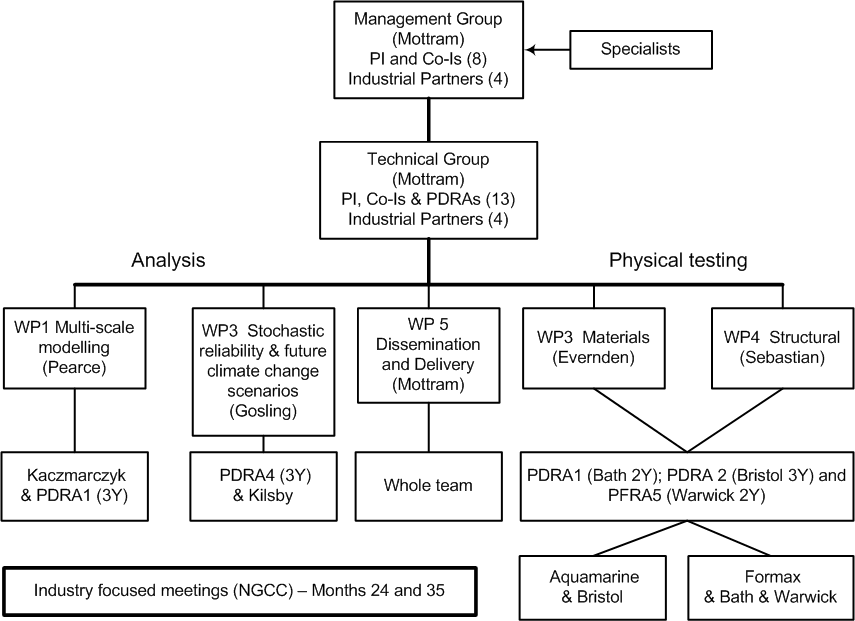Research
The main hurdle that composite structures have to overcome is concern over their durability performance in a 50+ year infrastructure environment. The DURACOMP research project will address this challenge by developing a stochastic modelling framework specifically for infrastructure composites.
The DURACOMP project involves a three-pronged, approach based on: physical testing of structural connections and joints, and materials; computational modelling of multi-scale structures; and probability analysis of properties, loads and environmental (climate change) factors.
Our goal is for the DURACOMP team to deliver the basis of a new paradigm for specification of composite solutions in Ground and Structural Engineering, driven by the need to prepare the UK’s infrastructure for an uncertain future.
Composites in Current and Future Infrastructure
New build
The growth in infrastructure applications is for new-build projects and the Network Group for Composites for Construction (NGCC) represents stakeholders in the UK and promotes their activities. For details on what NGCC is doing go to - http://www.ngcc.org.uk/.
Structural repair & adaptation (bridge repair)
Composites offer unrivalled engineering solutions to: increasingly prevalent in ageing infrastructure; avoid unnecessary use of primary resources; and providing infrastructure resilience.
Wind/wave/tidal turbines
Larger blades and other energy unit structures often require structural materials with relatively high strength-to-weight and stiffness-to-weight ratios. Only composite materials are known to meet these and other demanding design requirements.
There many other applications where composite shapes and systems offer successful application in transport, communications, energy, water services, etc.
DURACOMP Project
A 2010 review by EPSRC on research activities in Ground & Structural Engineering identified two themes for support via Networks, and they are:
- Novel Materials and Novel Use of Materials in the Built Environment (LIMESNET)
- Resilient and Sustainable Infrastructure (FIF2 - Future Infrastructure Forum)
Creation of both the DURACOMP project team and the three-year research project for confidence in composite materials was a positive outcome from the activities of the LIMESNET network project with funding from EPSRC in 2011-12. The DURACOMP project has the aim of stimulating cross-disciplinary thinking to include materials science, computational mechanics, reliability analysis, environmental science and structural engineering. Moreover, our project is for new ideas that generate confidence in designing for durability and will enable over time for there to be new, innovative, complex and unusual structural solutions.
The DURACOMP project has a three-pronged approach with five Work Packages (WPs) for:
- Multi-scale modelling/degradation process (WP1)
- Material characterisation, at specimen (WP2) and system level testing (WP4)
- Stochastic reliability analysis & future climate change scenarios (WP3) and
- Dissemination/ Impact/ Management/National Importance (WP5).
Each WP is structured and managed with staged deliverables that are continuously monitored and adapted to minimise the risk of non-delivery. The management structure in the flow chart illustrates the distribution of Work Packages within the academic partners.

Adapting technologies between sectors, the research team utilise knowledge from aerospace and automotive industries where composites are more routinely used in structural applications.

